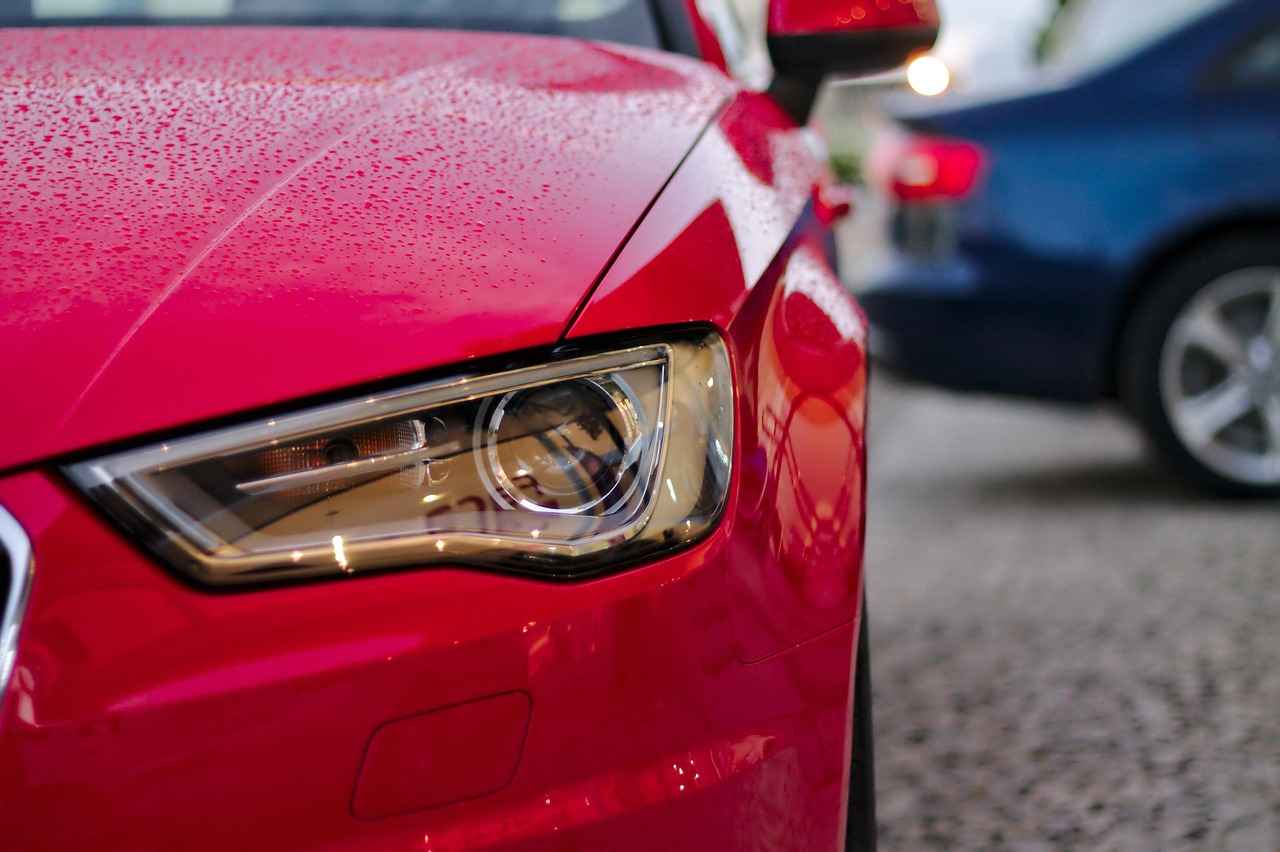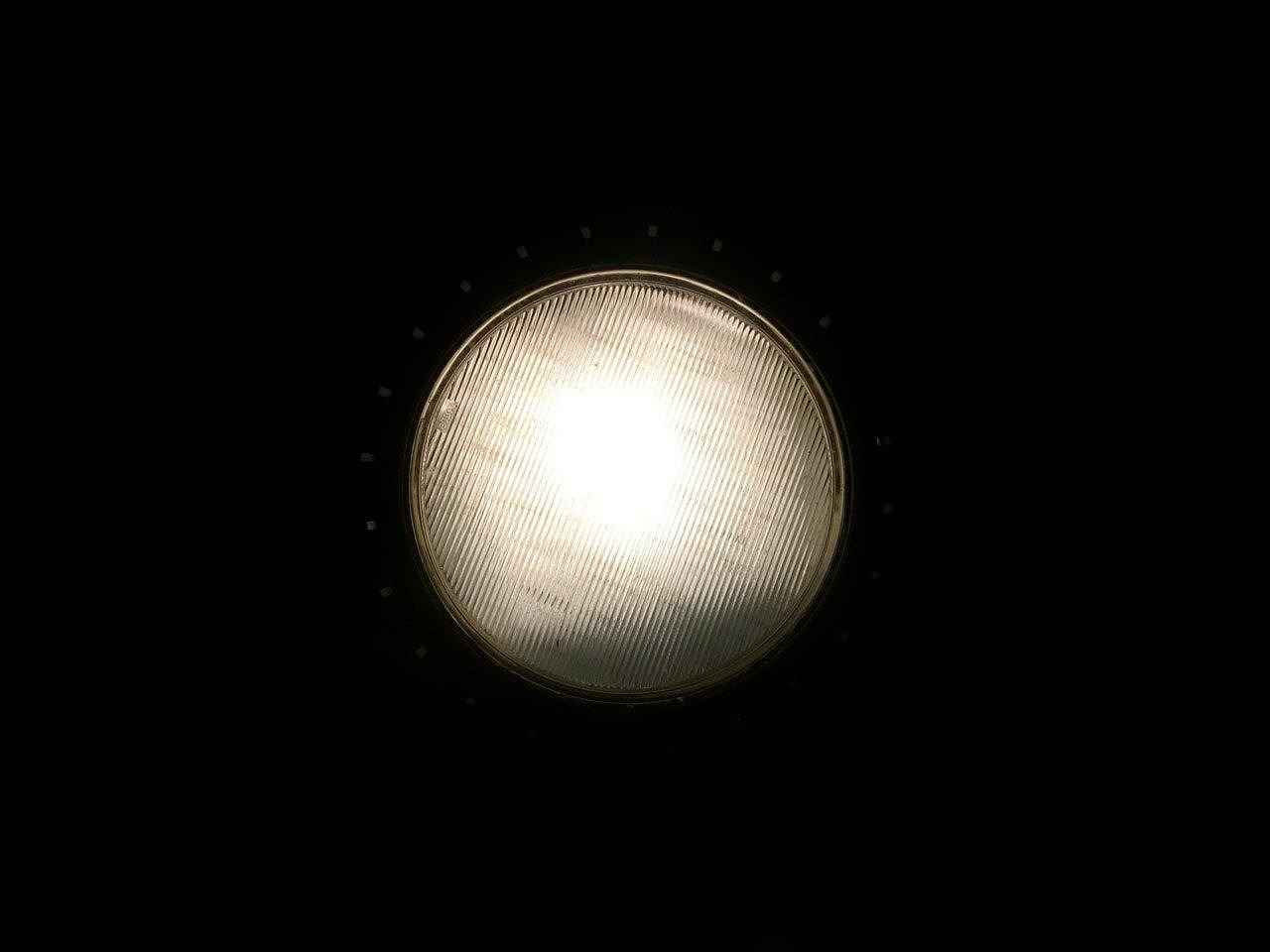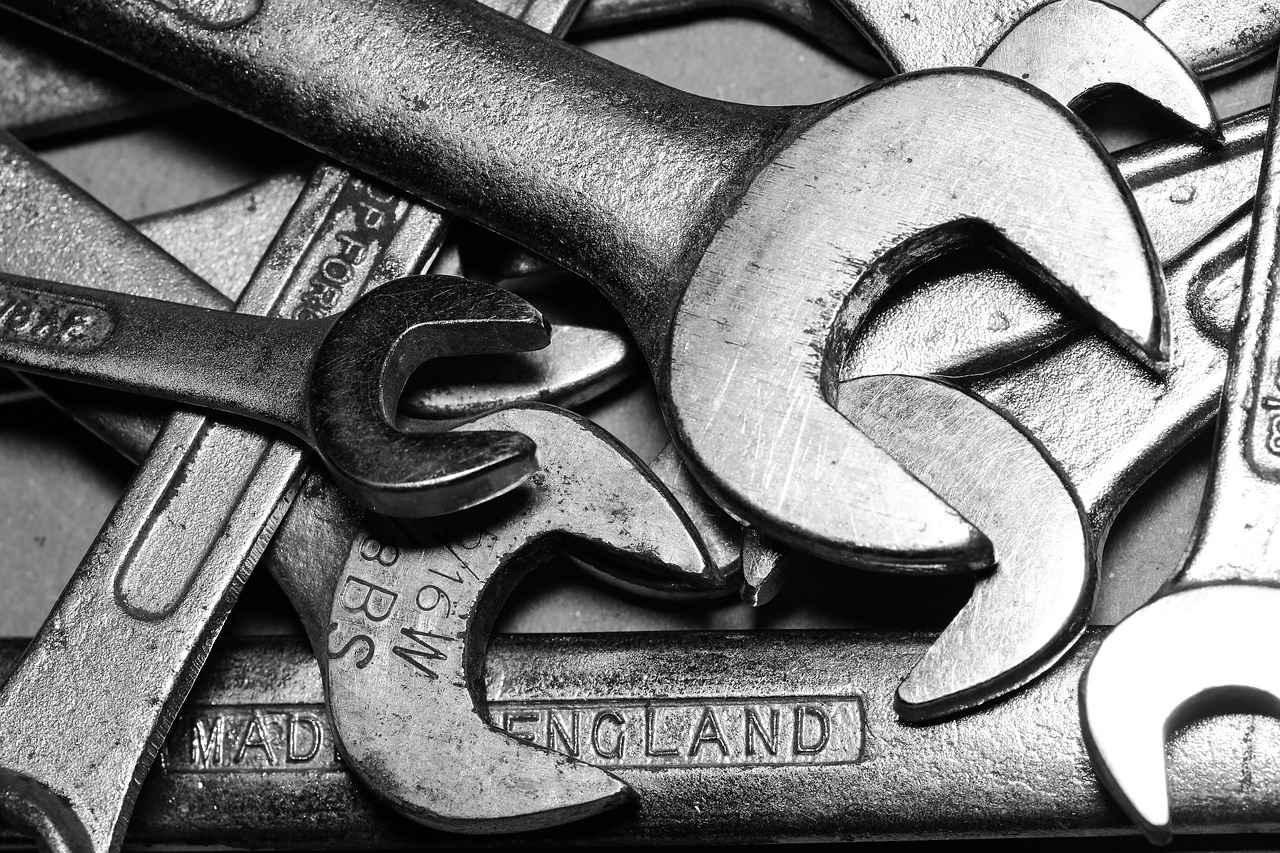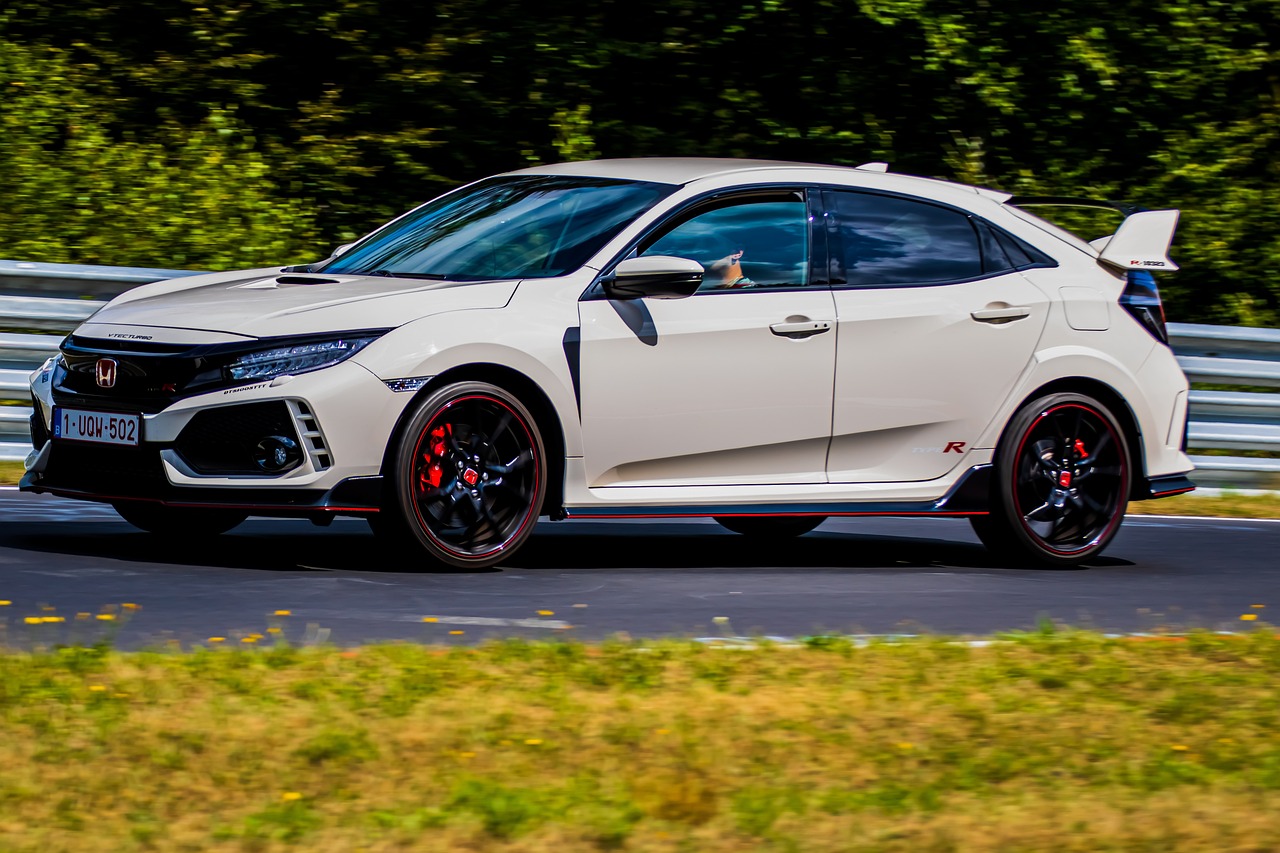This article serves as a comprehensive guide on how to change the headlights in a Honda Accord. It covers the necessary tools, step-by-step instructions, and valuable maintenance tips to ensure your headlights remain in optimal condition.
Before embarking on the headlight replacement process, it is crucial to gather the appropriate tools. Typically, you will need:
- Socket wrench – for removing any screws or bolts.
- Screwdriver – to help pry open any components if necessary.
- Gloves – to protect your hands and avoid touching the bulb with bare skin.
- Flashlight – for better visibility, especially in low-light conditions.
Choosing the correct headlight bulb is essential for ensuring optimal performance. To find the right bulb:
- Check your owner’s manual for specifications.
- Look at the existing bulb for any markings that indicate its type.
- Consult with an auto parts store for recommendations based on your Honda Accord model.
Follow this structured guide to change your Honda Accord headlight efficiently:
Start by parking your Honda Accord on a flat surface and turning off the engine. This ensures safety and provides adequate space to work on the headlights.
To replace the headlight, you need to access the headlight assembly. Depending on the model year of your Accord, this may involve:
- Removing the front grille.
- Unscrewing any protective covers that obstruct access.
Carefully disconnect the wiring harness from the old bulb. Then, twist and pull it out of the socket. Remember to avoid touching the glass part of the new bulb with your fingers, as oil from your skin can shorten its lifespan.
Insert the new bulb into the socket and secure it by twisting it into place. Reconnect the wiring harness to ensure a proper electrical connection.
While changing headlights is generally straightforward, you may encounter some common issues:
Some Honda Accord models have tighter spaces that can make accessing the headlight assembly challenging. If you face this issue, refer to your manual for specific instructions.
If the new headlight does not illuminate after installation, there may be an electrical issue. Check the fuse box and wiring connections to ensure everything is functioning correctly.
Regular maintenance can significantly extend the life of your headlights. Here are some practical tips:
Over time, headlight lenses can become cloudy. Regular cleaning with a headlight restoration kit or a mixture of baking soda and vinegar can keep them clear and effective.
Moisture can lead to dim headlights or premature burnout. Regularly inspect the seals and replace any damaged components to prevent water from entering the headlight assembly.
If you feel uncertain about changing your headlights or encounter persistent issues, it may be best to consult a professional mechanic for assistance. They can ensure the job is done correctly and safely.

What Tools Do You Need to Change a Honda Accord Headlight?
Changing the headlights of your Honda Accord is a straightforward process that can enhance your vehicle’s visibility and safety. However, before diving into the replacement, it is crucial to gather the right tools. This preparation ensures the job is done efficiently and effectively.
Before starting the headlight replacement process, it’s essential to gather the right tools. Typically, you will need:
- Socket Wrench: This tool is vital for loosening and tightening bolts that may secure the headlight assembly. Ensure you have the correct size to avoid stripping the bolts.
- Screwdriver: A flathead or Phillips screwdriver may be necessary to remove any screws holding the headlight assembly in place. Having both types on hand can be beneficial.
- Gloves: Wearing gloves protects your hands from sharp edges and prevents oils from your skin from transferring to the new bulb, which can shorten its lifespan.
- Safety Glasses: These will help protect your eyes from dust and debris while working on your vehicle.
- Towel or Cloth: A clean cloth can be useful for handling the new bulb and cleaning any dirt or grime from the headlight assembly.
Gathering these tools in advance will streamline the replacement process and minimize the risk of damage to your vehicle. Here’s a more in-depth look at each tool’s importance:
| Tool | Purpose |
|---|---|
| Socket Wrench | Loosens/tightens bolts securing the headlight assembly |
| Screwdriver | Removes screws holding the headlight in place |
| Gloves | Protects hands and prevents bulb contamination |
| Safety Glasses | Protects eyes from debris |
| Towel or Cloth | Handles the bulb and cleans the assembly |
Having the right tools not only makes the process smoother but also helps avoid unnecessary complications during the headlight replacement. If you find yourself missing any of these essential items, it’s best to acquire them before starting the job. This way, you can focus on the task at hand without interruptions.
In summary, equipping yourself with the proper tools is a crucial first step in changing your Honda Accord’s headlights. By ensuring you have a socket wrench, screwdriver, gloves, safety glasses, and a cloth, you are setting yourself up for a successful headlight replacement process.

How to Identify the Right Headlight Bulb?
When it comes to ensuring the safety and performance of your Honda Accord, identifying the right headlight bulb is essential. The headlights not only illuminate your path during nighttime driving but also increase visibility for other drivers. Therefore, selecting the appropriate bulb can significantly affect your driving experience.
Choosing the correct headlight bulb is crucial for optimal performance. The right bulb will provide the necessary brightness and clarity, allowing you to see and be seen effectively. Using an incompatible bulb can lead to various issues, including reduced visibility, increased glare, and even potential damage to your vehicle’s electrical system.
- Consult Your Owner’s Manual: The first step in identifying the correct headlight bulb is to refer to your owner’s manual. This document contains specific information regarding the type of bulbs used in your model.
- Check Bulb Specifications: Look for the bulb specifications, which typically include the bulb type, wattage, and size. Common types for Honda Accords include H4, H11, and 9005, among others.
- Examine the Old Bulb: If you have access to the old bulb, you can often find the type printed directly on it. This makes it easier to purchase an exact replacement.
- Use Online Resources: Websites and forums dedicated to automotive care can provide valuable insights. Many parts retailers also offer tools to help you find the right bulb based on your vehicle’s make and model.
Headlight bulbs come in various types, including halogen, LED, and HID (High-Intensity Discharge). Each type has its advantages:
- Halogen Bulbs: These are the most common and are typically less expensive. They provide good visibility but have a shorter lifespan compared to other types.
- LED Bulbs: Known for their energy efficiency and long lifespan, LED bulbs produce a bright, white light that enhances nighttime visibility.
- HID Bulbs: These bulbs offer superior brightness and are ideal for night driving. However, they can be more costly and may require special fixtures.
When selecting a headlight bulb, consider the following:
- Brightness: Look for bulbs that provide adequate lumens for your driving conditions. Generally, a higher lumen count means brighter light.
- Color Temperature: Bulbs with a higher color temperature (measured in Kelvin) produce a whiter light, which can improve visibility and reduce eye strain.
- Longevity: Consider the lifespan of the bulb. While cheaper options may save you money upfront, they may need to be replaced more frequently.
Headlight bulbs can be purchased from various sources, including auto parts stores, online retailers, and dealerships. Make sure to compare prices and check for customer reviews to ensure you are getting a quality product.
In summary, choosing the right headlight bulb for your Honda Accord is a vital step in maintaining your vehicle’s safety and performance. By consulting your owner’s manual, understanding bulb types, and considering factors like brightness and longevity, you can make an informed decision that enhances your driving experience.

Step-by-Step Guide to Changing a Honda Accord Headlight
Changing a headlight in your Honda Accord can seem daunting, but with the right guidance, it becomes a manageable task. This step-by-step guide will walk you through the process, ensuring you can replace your headlights efficiently while avoiding any potential damage to your vehicle.
Follow this comprehensive guide to change your Honda Accord headlight efficiently. The process involves several key steps that ensure a successful replacement without damaging the vehicle.
Before diving into the replacement, it is crucial to prepare your vehicle properly. Start by:
- Parking on a flat surface: This ensures stability while you work.
- Turning off the engine: Safety is paramount; ensure the vehicle is off to prevent any accidents.
- Engaging the parking brake: This provides an extra layer of safety while you are working.
To replace the headlight, you need to access the headlight assembly. Depending on the model year of your Honda Accord, this may involve:
- Removing the front grille or bumper cover.
- Unscrewing any fasteners that hold the headlight assembly in place.
Refer to your owner’s manual for specific instructions related to your model.
Once you have access to the assembly, you can proceed to remove the old bulb:
- Disconnect the wiring harness: Gently pull the connector away from the bulb.
- Twist and pull: Carefully twist the bulb counterclockwise and pull it out of the socket. Be cautious to avoid damaging any surrounding components.
Now, it’s time to install the new bulb:
- Insert the new bulb: Place the new bulb into the socket, ensuring it is aligned correctly.
- Secure it: Twist the bulb clockwise to lock it in place.
- Reconnect the wiring harness: Make sure the connection is firm to ensure proper electrical flow.
While the replacement process is straightforward, you may encounter certain issues:
- Difficulty accessing the headlight assembly: Some models have tighter spaces. If you struggle, consult your manual for specific guidance.
- Electrical problems: If the new headlight does not illuminate, check the fuse box and wiring connections.
Regular maintenance can extend the life of your headlights:
- Cleaning your headlight lenses: Use a headlight restoration kit or a mixture of baking soda and vinegar to keep them clear.
- Checking for moisture: Inspect seals for damage and replace any components to prevent water ingress.
If you feel uncertain about changing your headlights or face persistent issues, it may be best to consult a professional mechanic for assistance. They can provide expert insights and ensure the job is done correctly.
Step 1: Prepare Your Vehicle
When it comes to changing the headlights of your Honda Accord, the first step is crucial for both safety and efficiency. Begin by parking your Honda Accord on a flat surface to ensure stability during the process. This will also help prevent any accidental rolling or movement of the vehicle while you are working on it. Once parked, turn off the engine to eliminate any risk of electrical shock or accidental activation of the headlights.
It’s also advisable to engage the parking brake to further enhance safety. After ensuring that the vehicle is secure, take a moment to gather all necessary tools and materials. This preparation will streamline the headlight replacement process and minimize the time spent on the task.
Before starting, consider gathering the following tools:
- Socket wrench – Essential for loosening bolts and screws.
- Screwdriver – A flathead or Phillips screwdriver may be needed depending on your model.
- Gloves – Protect your hands and keep the new bulb clean.
- Flashlight – To illuminate dark areas, especially if working in low light conditions.
Additionally, ensure you have the correct replacement headlight bulbs compatible with your specific Honda Accord model. Refer to the owner’s manual or the specifications on the current bulbs to avoid any mismatches.
Once you have prepared your vehicle and gathered your tools, you will be ready to move on to the next step: accessing the headlight assembly. This may require removing the front grille or other components, depending on your vehicle’s model year. Always refer to your vehicle’s manual for specific instructions related to your model.
By taking these preparatory steps seriously, you set the stage for a smooth and effective headlight replacement process. Remember, safety should always be your top priority when working on your vehicle, and being well-prepared can make all the difference.
Step 2: Access the Headlight Assembly
To successfully replace the headlight in your Honda Accord, it is crucial to first access the headlight assembly. The process can vary slightly depending on the model year of your vehicle, so understanding the general steps involved is essential for an efficient replacement.
- Consult Your Owner’s Manual: Before starting, check your owner’s manual for specific instructions related to your Accord model. This document often contains diagrams and detailed steps that can guide you effectively.
- Gather Necessary Tools: Ensure you have the required tools at hand. A socket wrench or screwdriver may be needed to remove components obstructing access to the headlight assembly.
- Prepare the Area: Park your vehicle on a flat surface and turn off the engine. This not only ensures safety but also provides ample space to maneuver while working on the headlights.
Once you are prepared, follow these steps to access the headlight assembly:
1. Open the hood of your Honda Accord.2. Locate the front grille and identify any clips or screws that may be securing it in place.3. Carefully remove these clips or screws using your screwdriver or socket wrench.4. Gently pull the grille away from the vehicle, taking care not to damage any clips.5. If your model requires it, you may also need to remove other components, such as the bumper cover or splash shield. Follow the same process to detach any necessary parts.6. After removing the obstructing components, you should have clear access to the headlight assembly.
It’s important to note that some Honda Accord models may have tighter spaces, making it more challenging to reach the headlight assembly. In such cases, patience and careful maneuvering are key. If you’re struggling, consulting your manual for specific instructions or diagrams can be particularly helpful.
Additionally, take extra caution when handling the components. Avoid forcing any parts, as this could lead to damage that may require costly repairs. If you encounter any issues, consider seeking assistance from a professional mechanic who can provide guidance tailored to your specific model.
In summary, accessing the headlight assembly involves a few key steps that may vary by model year. By following the outlined procedures and taking the necessary precautions, you can efficiently prepare for the headlight replacement process. This foundational step is critical for ensuring a successful and safe headlight change, ultimately improving your vehicle’s visibility and safety on the road.
Step 3: Remove the Old Headlight Bulb
Changing the headlight bulb in your Honda Accord is a straightforward task that can greatly enhance your vehicle’s visibility at night. In this section, we will focus on the crucial step of removing the old headlight bulb, ensuring that you do it safely and effectively.
Removing the old headlight bulb requires careful handling to avoid damaging the bulb socket or the wiring harness. Follow these steps to ensure a smooth removal process:
- Step 1: Safety First – Before starting, make sure your vehicle is turned off and parked on a flat surface. This ensures your safety while working on the headlights.
- Step 2: Locate the Headlight Assembly – Open the hood and locate the headlight assembly on the side where you need to replace the bulb. Depending on your model, you may need to remove the front grille or other components for easier access.
- Step 3: Disconnect the Wiring Harness – Carefully locate the wiring harness connected to the old bulb. To disconnect it, gently press the tab on the connector and pull it away from the bulb. Be cautious not to apply excessive force, as this could damage the wiring.
- Step 4: Remove the Bulb – Once the wiring harness is disconnected, you can proceed to remove the old bulb. Grasp the bulb firmly and twist it counterclockwise until it releases from the socket. Pull it straight out to avoid any bending or breaking.
- Step 5: Avoid Touching the Glass – It is crucial to avoid touching the glass portion of the new bulb with your fingers when installing it later. The oils from your skin can create hot spots on the glass, potentially leading to premature failure. If you accidentally touch the glass, clean it with a lint-free cloth and rubbing alcohol.
In some cases, the old bulb may be difficult to remove. If you encounter resistance:
- Check for Clips or Brackets – Some models may have additional clips or brackets securing the bulb. Make sure these are removed before attempting to pull the bulb out.
- Use Gentle Force – If the bulb is still stuck, apply gentle twisting motions while pulling it straight out. Avoid using excessive force to prevent damage to the socket.
- Consult the Manual – If you continue to experience difficulties, refer to your owner’s manual for specific instructions related to your Honda Accord model.
When removing the old headlight bulb, be mindful of these common mistakes:
- Forgetting to Disconnect the Battery – Always disconnect the battery before starting to avoid any electrical shocks or short circuits.
- Neglecting to Wear Gloves – Wearing gloves not only protects your hands but also prevents oils from your skin coming into contact with the bulb.
- Rushing the Process – Take your time to ensure that each step is followed carefully. Rushing can lead to mistakes that may damage the headlight assembly.
By following these instructions, you can successfully remove the old headlight bulb from your Honda Accord, setting the stage for a seamless installation of the new bulb. Remember, patience and attention to detail are key to achieving the best results.
Step 4: Install the New Headlight Bulb
When it comes to changing your Honda Accord’s headlight bulb, is a crucial part of the process. This step ensures that your new bulb is securely in place and ready to provide optimal visibility on the road. Follow these detailed instructions for a successful installation.
First, take the new headlight bulb out of its packaging. It is important to handle the bulb with care, as any oils or fingerprints from your hands can damage it. To avoid this, consider wearing gloves during the installation process. Now, let’s dive into the installation steps:
- Align the Bulb: Begin by carefully inserting the new bulb into the headlight socket. Ensure that it is oriented correctly; most bulbs have a specific alignment to prevent incorrect installation.
- Twist to Secure: Once the bulb is in place, gently twist it clockwise to secure it in the socket. You should feel it click or lock into position, indicating that it is firmly attached.
- Reconnect the Wiring Harness: After securing the bulb, the next step is to reconnect the wiring harness. This is critical for establishing a proper electrical connection. Ensure that the connectors are aligned and push them together until you hear a click. This sound signifies that the connection is secure.
- Check for Proper Functionality: Before reassembling any components you may have removed, it’s a good idea to test the new headlight. Turn on your vehicle’s ignition and activate the headlights to ensure they are functioning correctly. If the bulb does not illuminate, double-check the connections and the bulb seating.
Once you have confirmed that the new bulb is working, you can proceed to reassemble any parts that were removed to access the headlight assembly. This may include the front grille or other components, depending on your Honda Accord model.
By following these steps, you can confidently install the new headlight bulb in your Honda Accord. Remember, the key to a successful installation is to handle the bulb carefully, ensure all connections are secure, and verify functionality before closing everything up. Regular maintenance of your headlights will not only improve visibility but also enhance safety while driving.

Common Issues When Changing Honda Accord Headlights
Changing the headlights on your Honda Accord is generally a straightforward task, but like any DIY project, it can come with its own set of challenges. Understanding these common issues can significantly enhance your troubleshooting skills and make the process smoother. Below, we will explore some frequent problems that may arise when changing your headlights and how to address them effectively.
- Issue 1: Limited Access to the Headlight Assembly
- Issue 2: Electrical Problems Post-Installation
- Issue 3: Misalignment of Headlight Beam
- Issue 4: Bulb Compatibility Issues
- Issue 5: Moisture in the Headlight Assembly
Many Honda Accord models have a compact engine bay, making it difficult to reach the headlight assembly. If you find yourself struggling to access the headlights, consult your owner’s manual for specific instructions. In some cases, removing the front grille or other components may be necessary to gain better access.
After replacing the headlight bulb, you might find that the new bulb does not illuminate. This can be frustrating, but it often points to an electrical issue. Start by checking the fuse box for any blown fuses. Additionally, inspect the wiring connections to ensure they are secure and free from corrosion.
Sometimes, after replacing a headlight, the beam may appear misaligned. This can result in poor visibility and can be dangerous while driving at night. To fix this, you can adjust the headlight alignment by locating the adjustment screws on the headlight assembly. Refer to your manual for the correct procedure to align the headlights properly.
Using the wrong type of headlight bulb can lead to performance issues or even damage to the headlight assembly. Always verify the specifications of the replacement bulb against your vehicle’s requirements. If in doubt, consult an automotive parts store or your owner’s manual for guidance.
If you notice condensation inside the headlight assembly after installation, it can lead to premature bulb failure. This usually indicates a seal failure. Inspect the seals for any damage and replace them if necessary to prevent moisture from entering the assembly.
By being aware of these common issues, you can approach the task of changing your Honda Accord headlights with greater confidence. It’s essential to be prepared and to understand the potential challenges that may arise. If you encounter persistent issues or feel uncertain about the process, seeking professional assistance is always a wise choice.
In conclusion, while changing the headlights on your Honda Accord is a manageable task, being informed about potential problems can save you time and frustration. Make sure to equip yourself with the right tools and knowledge, and your headlight replacement will be a success.
Issue 1: Difficulty Accessing the Headlight Assembly
When it comes to changing the headlights on your Honda Accord, one of the most common challenges drivers face is accessing the headlight assembly. This issue is particularly prevalent in certain models where the engine compartment is more compact, making it difficult to maneuver and reach the necessary components. To address this, it’s essential to understand the specific layout of your vehicle and follow the appropriate steps to gain access.
The design of some Honda Accord models features a tighter engine bay, which can limit the space available for reaching the headlight assembly. This can be especially true for newer models with advanced technology and additional components packed into the engine compartment. In such cases, having a clear strategy can make the process more manageable.
Before attempting to access the headlight assembly, it is highly advisable to consult your owner’s manual. This document provides essential information tailored to your specific model, including diagrams and detailed instructions that can simplify the process. Look for sections related to headlight replacement or maintenance, as they will guide you on how to remove any obstructing parts safely.
- Gather Necessary Tools: Ensure you have the right tools, such as a socket wrench, screwdrivers, and possibly a flashlight for better visibility.
- Remove Obstructions: Depending on your model, you may need to remove components like the front grille or air intake duct. Carefully unscrew or unclip these parts to create a clear path to the headlight assembly.
- Use Proper Techniques: Employ gentle but firm movements when removing components to avoid breaking clips or damaging the assembly. If you encounter resistance, double-check for any additional screws or clips that may be holding parts in place.
As you work to access the headlight assembly, you may encounter several common challenges:
- Limited Visibility: If the area is cramped, using a flashlight can help illuminate dark spots, making it easier to see what you are doing.
- Stubborn Components: If components are stuck, applying a bit of lubricant can help loosen them. Just be cautious not to get any on the electrical parts.
- Complex Wiring: Take care when handling wiring harnesses; ensure you disconnect them gently to avoid damaging any connections.
If you find that accessing the headlight assembly remains a significant challenge despite following these guidelines, it may be best to seek help from a professional mechanic. They have the experience and tools necessary to navigate tight spaces and ensure that the job is done correctly without risking damage to your vehicle.
In summary, while some Honda Accord models present challenges in accessing the headlight assembly, understanding your vehicle’s layout and consulting the owner’s manual can significantly ease the process. Always prioritize safety and consider professional help if you’re unsure about any steps.
Issue 2: Electrical Problems
When replacing the headlights of your Honda Accord, it’s not uncommon to face certain challenges, particularly with electrical issues. One of the most frustrating scenarios is when a newly installed headlight fails to illuminate. This can lead to confusion and concern, but understanding the potential causes can help you troubleshoot effectively.
If you’ve just installed a new headlight and it doesn’t turn on, the first step is to remain calm and follow a systematic approach to identify the problem.
The fuse box is a critical component of your vehicle’s electrical system. A blown fuse can easily prevent the headlight from functioning. To check the fuse:
- Locate the fuse box, which is usually found under the dashboard or in the engine compartment.
- Refer to the diagram on the fuse box cover to identify the headlight fuse.
- Remove the fuse and inspect it for any signs of damage or breakage.
- If the fuse is blown, replace it with one of the same amperage.
After confirming that the fuse is intact, the next step is to inspect the wiring connections. Loose or damaged wires can disrupt the electrical flow to the headlight. Here’s how to check:
- Ensure the wiring harness is securely connected to the headlight bulb.
- Look for any frayed or exposed wires that might indicate a short circuit.
- If you find damaged wiring, consider using electrical tape for a temporary fix, or replace the wiring if necessary.
It’s also possible that the new bulb is defective. To confirm this:
- Remove the bulb and test it in a working headlight socket, if available.
- If it fails to light up, replace it with a new one.
Another common electrical problem could be related to grounding. A poor ground connection can prevent the headlight from functioning properly. Inspect the ground wire connected to the headlight assembly:
- Ensure it’s clean and securely attached to the vehicle’s chassis.
- Use a multimeter to test for continuity if you’re familiar with electrical systems.
If you’ve gone through these troubleshooting steps and the headlight still does not work, it may be time to consult a professional mechanic. They can perform a more thorough diagnosis and help identify any complex electrical issues that may not be immediately apparent.
In summary, encountering electrical problems after changing your Honda Accord’s headlights can be frustrating. However, by methodically checking the fuse, inspecting wiring connections, testing the new bulb, and addressing grounding issues, you can often resolve the problem without needing professional assistance. If all else fails, don’t hesitate to seek expert help to ensure your vehicle is safe and roadworthy.

How to Maintain Your Honda Accord Headlights?
Maintaining your Honda Accord headlights is essential for ensuring optimal visibility and safety while driving. Over time, headlights can become dim, cloudy, or even fail completely if not properly cared for. This guide will provide you with effective strategies to keep your headlights in excellent condition, enhancing both their lifespan and performance.
Regular maintenance is crucial as it can significantly extend the life of your headlights. Neglecting them can lead to decreased visibility, which increases the risk of accidents, especially during night driving or adverse weather conditions. Simple practices can prevent issues and improve visibility, making it easier for you to see the road ahead.
- Cleaning Your Headlight Lenses: Over time, the lenses can accumulate dirt, grime, and oxidation, leading to diminished light output. Cleaning them regularly with a headlight restoration kit or a DIY solution made from baking soda and vinegar can help maintain clarity.
- Checking for Moisture: Moisture buildup inside the headlight assembly can cause the bulbs to dim or burn out prematurely. Inspect the seals around the headlights and replace any damaged components to prevent water ingress.
- Inspecting Bulbs: Regularly check the condition of your bulbs. If you notice that a bulb is flickering or has a yellow tint, it may be time to replace it. Always use bulbs that meet the specifications outlined in your owner’s manual.
- Adjusting Headlight Aim: Properly aimed headlights ensure that you have the best visibility without blinding oncoming drivers. If you notice that your headlights seem misaligned, consult your owner’s manual for adjustment procedures.
It is recommended to clean your headlights at least once every few months, or more frequently if you drive in harsh conditions. Regular cleaning helps to prevent the buildup of oxidation and dirt, which can impair visibility.
- Dim Light Output: If your headlights appear dimmer than usual, it may indicate that the bulbs are nearing the end of their lifespan or that the lenses need cleaning.
- Cloudy or Yellowed Lenses: This is a clear sign that your headlights require cleaning or restoration.
- Moisture Inside the Housing: If you see condensation or water droplets inside the headlight assembly, it’s crucial to address this issue promptly.
Yes, you can restore your headlights at home using various methods. Many headlight restoration kits are available that include sandpaper, polish, and sealant. Alternatively, a mixture of baking soda and vinegar can effectively clean and restore clarity to the lenses. Always follow the instructions provided with any kit or method you choose to ensure the best results.
If you encounter persistent issues, such as electrical problems or extensive moisture damage, it may be best to consult a professional mechanic. They can provide a thorough inspection and recommend the appropriate solutions to ensure your headlights function correctly.
In summary, maintaining your Honda Accord headlights involves regular cleaning, moisture checks, and timely bulb replacements. By following these practices, you can ensure that your headlights remain effective, enhancing your safety on the road.
Cleaning Your Headlight Lenses
Maintaining clear headlights is essential for safe driving, especially at night or in adverse weather conditions. Over time, headlight lenses can accumulate dirt, grime, and oxidation, leading to a cloudy appearance. This can significantly reduce visibility and make it difficult for other drivers to see your vehicle. Therefore, it’s crucial to implement a regular cleaning routine to keep your headlights in optimal condition.
Headlight lenses can become cloudy due to various factors, including:
- UV Exposure: Prolonged exposure to sunlight can cause the plastic lens to oxidize and become discolored.
- Environmental Contaminants: Dirt, road salt, and other environmental factors can contribute to lens degradation.
- Wear and Tear: Over time, the protective coating on headlights can wear off, allowing moisture and debris to accumulate.
Cleaning your headlight lenses is a straightforward process that can be done at home. Here’s a detailed method using a headlight restoration kit or a baking soda and vinegar mixture:
Headlight restoration kits are specially designed to restore clarity to foggy lenses. Here’s how to use one:
- Gather Your Supplies: Ensure you have the restoration kit, microfiber cloths, and tape.
- Clean the Area: Wipe down the headlight with soap and water to remove any surface dirt.
- Apply Tape: Use painter’s tape to protect the surrounding areas of your vehicle.
- Follow Instructions: Each kit will have specific steps, typically involving sanding the lens and applying a polishing compound.
- Final Polish: Buff the lens with a clean microfiber cloth for a clear finish.
If you prefer a natural method, a mixture of baking soda and vinegar can be effective:
- Mix Ingredients: Combine 1 part baking soda with 1 part vinegar to create a paste.
- Apply the Paste: Use a cloth to apply the paste generously over the headlight lens.
- Scrub Gently: Use a soft brush or cloth to scrub the lens in circular motions.
- Rinse Thoroughly: Rinse the lens with clean water and dry with a microfiber cloth.
To maintain optimal visibility, it’s advisable to clean your headlights at least once every six months. However, if you frequently drive in harsh conditions or notice a decline in clarity, more frequent cleaning may be necessary.
- Regular Inspections: Check your headlights regularly for any signs of moisture or damage.
- Use UV Protectant: Applying a UV protectant can help shield the lenses from sun damage.
- Keep Them Covered: If your vehicle is parked outside, consider using a car cover to protect the headlights from the elements.
By following these steps and tips, you can ensure that your Honda Accord’s headlights remain clear and functional, enhancing your safety on the road.
Checking for Moisture in Headlights
When it comes to maintaining the performance and safety of your Honda Accord, checking for moisture in the headlights is an essential task. Moisture buildup can lead to a range of problems, including dimming lights and premature bulb burnout. This guide will explain how to identify and address moisture issues in your headlights effectively.
Headlights are designed to provide clear visibility during night driving and adverse weather conditions. However, when moisture infiltrates the headlight assembly, it can create a foggy appearance that reduces light output. In some cases, water accumulation can even damage the bulb and electrical components, leading to costly repairs.
- Visual Inspection: Start by examining the exterior of your headlights. Look for signs of condensation or water droplets inside the lens. If you notice any moisture, it’s crucial to address it promptly.
- Check the Seals: Inspect the rubber seals around the headlight assembly. Over time, these seals can wear out or become damaged, allowing moisture to seep in. If you find any cracks or tears, they will need to be replaced.
- Test for Leaks: If you suspect that moisture is entering your headlights, consider conducting a simple water test. Use a garden hose to lightly spray water around the headlight area without directly soaking it. Check for any signs of moisture inside the assembly afterward.
If you discover moisture in your headlights, it’s important to take immediate action:
- Remove the Headlight Assembly: Carefully detach the headlight assembly from your vehicle. Refer to your Honda Accord’s manual for specific instructions related to your model year.
- Dry the Assembly: Use a clean, dry cloth to wipe away any moisture inside the headlight. For stubborn moisture, you may need to leave the assembly in a warm, dry area for a few hours to allow it to completely air out.
- Replace Damaged Seals: If the seals are compromised, replace them with new ones to prevent future moisture ingress. Ensure that the new seals fit snugly around the assembly.
- Reassemble and Test: Once everything is dry and secure, reattach the headlight assembly to your vehicle. Turn on your headlights to ensure they are functioning correctly.
To avoid moisture issues in the future, consider implementing these preventive measures:
- Regular Inspections: Make it a habit to check your headlights periodically, especially before long trips or during seasonal changes.
- Use Quality Bulbs: Invest in high-quality headlight bulbs that are designed to withstand moisture and temperature fluctuations.
- Avoid High-pressure Washes: When cleaning your vehicle, avoid using high-pressure water sprays directly on the headlights, as this can force water into the assembly.
By following these guidelines, you can ensure that your Honda Accord’s headlights remain clear and functional, ultimately enhancing your safety on the road.

When to Seek Professional Help for Headlight Replacement?
When it comes to maintaining your vehicle, headlight replacement is a task that many car owners may consider tackling themselves. However, there are instances where seeking professional help is not only advisable but necessary. Understanding when to consult a mechanic can save you time, money, and potential headaches.
Changing headlights may seem straightforward, but there are several factors that can complicate the process. If you’re feeling uncertain about the steps involved or if you encounter persistent issues, it’s wise to reach out to a professional. Here are some reasons to consider:
- Complexity of the Task: Depending on your Honda Accord model, accessing the headlight assembly can be tricky. Some models require the removal of other components, and a professional mechanic has the expertise to navigate these challenges without causing damage.
- Electrical Issues: If your new headlight does not illuminate after installation, it could indicate an underlying electrical problem. A professional can troubleshoot and diagnose issues related to the wiring or fuse box that may not be immediately apparent to the average car owner.
- Time Constraints: If you’re pressed for time or lack the necessary tools, it may be more efficient to have a mechanic handle the replacement. This way, you can focus on your daily responsibilities without the added stress of a DIY project.
There are specific signs that can indicate it’s time to seek professional assistance:
- Frequent Burnouts: If you find that your headlights burn out frequently, this could be a sign of a deeper issue, such as voltage irregularities.
- Moisture in Headlight Assembly: If you notice condensation inside your headlight, it may indicate a seal issue that requires professional repair to prevent further damage.
- Inconsistent Lighting: If one headlight is brighter than the other or flickers intermittently, it could suggest an electrical problem that needs expert attention.
Finding a trustworthy mechanic is crucial for ensuring your vehicle is in good hands. Here are some tips:
- Check Reviews: Look for online reviews and testimonials from other customers. A mechanic with a solid reputation is more likely to provide quality service.
- Ask for Recommendations: Friends and family can often recommend reliable mechanics based on their experiences.
- Verify Credentials: Ensure the mechanic is certified and has experience specifically with your vehicle make and model.
While changing your Honda Accord’s headlights can be a rewarding DIY project, it’s essential to recognize when to seek professional help. If you feel uncertain or face persistent issues, consulting a professional mechanic can provide peace of mind and ensure the job is done correctly. By understanding the signs and knowing how to choose a reliable mechanic, you can maintain your vehicle’s safety and functionality effectively.
Frequently Asked Questions
- How often should I change my Honda Accord headlights?
It’s generally recommended to replace your headlights every 1-2 years, but it can vary based on usage and bulb type. If you notice dimming or flickering, it’s time for a change!
- Can I replace my Honda Accord headlights myself?
Absolutely! With the right tools and a bit of patience, you can change your headlights at home. Just follow the step-by-step guide and you’ll be good to go!
- What if my new headlight bulb doesn’t work?
If your new bulb doesn’t light up, check the wiring connections and fuses. Sometimes, it might just be a loose connection or a blown fuse causing the issue.
- Is it necessary to clean my headlight lenses?
Yes! Cleaning your headlight lenses is crucial for maintaining visibility. Cloudy lenses can significantly reduce light output, so regular cleaning is a must!
- When should I seek professional help?
If you’re feeling overwhelmed or run into persistent issues that you can’t resolve, it’s wise to consult a professional mechanic. Better safe than sorry!



